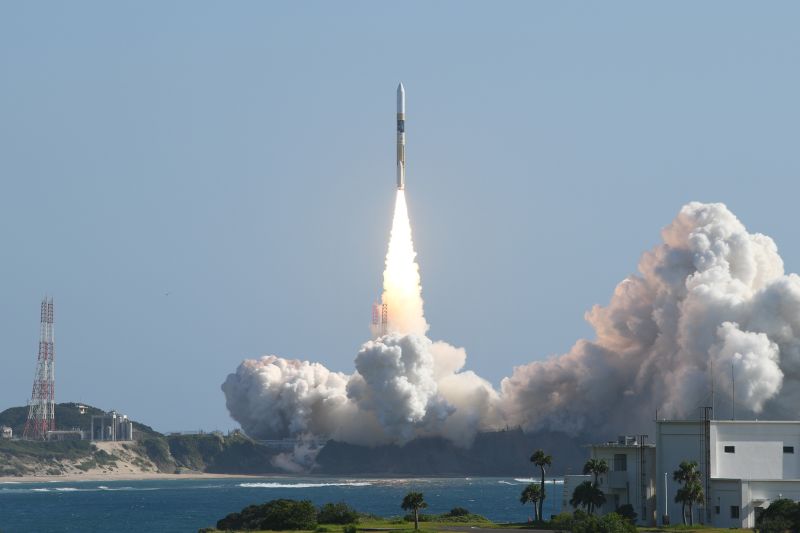
Japan's Moon Sniper: A Historic Landing Attempt

As the first US lunar lander mission in decades ends without reaching its target, a spacecraft that Japan launched is drawing closer to the moon and preparing for a historic landing attempt. The Japan Aerospace Exploration Agency's Smart Lander for Investigating Moon, or SLIM, is expected to touch down on the lunar surface at 10:20 a.m. ET Friday, or 12:20 a.m. Saturday Japan Standard Time. If successful, SLIM’s landing will mark Japan’s first time putting a robotic explorer on the moon’s surface — and make it the third country to achieve such a feat in the 21st century, and the fifth country to soft-land a spacecraft on the moon since the Soviet Luna 9 mission in 1966.
The Journey to the Moon
The Japan Aerospace Exploration Agency’s Smart Lander for Investigating Moon, or SLIM, is expected to touch down on the lunar surface at 10:20 a.m. ET Friday, or 12:20 a.m. Saturday Japan Standard Time. If successful, SLIM’s landing will mark Japan’s first time putting a robotic explorer on the moon’s surface — and make it the third country to achieve such a feat in the 21st century, and the fifth country to soft-land a spacecraft on the moon since the Soviet Luna 9 mission in 1966.
The Japan Aerospace Exploration Agency's SLIM lunar lander launched aboard a H-IIA launch vehicle on September 7, 2023, from the Tanegashima Space Center.
The spacecraft, also nicknamed the 'Moon Sniper' for its precision technology, will begin its descent toward the lunar surface at 10 a.m. ET. The landing will be streamed live on YouTube in Japanese and English.
'The start of the deceleration to the landing on the Moon’s surface is expected to be a breathless, numbing 20 minutes of terror,' said Kenji Kushiki, the subproject manager of the SLIM mission, in a statement.
The small-scale exploration lander is designed to demonstrate a 'pinpoint' landing at a specific location.
Other lunar landings, including NASA’s Apollo missions, achieved extreme accuracy in reaching a specific zone, but SLIM’s technology aims to bring precision to robotic probes that are low-cost and lightweight.
The SLIM lander will target a landing site that stretches just 100 meters (328 feet) across.
The SLIM lander launched in September alongside the XRISM satellite (pronounced 'crism'), also called the X-Ray Imaging and Spectroscopy Mission, a joint mission between JAXA and NASA. Following the launch, SLIM used its own propulsion system to head toward the moon. The spacecraft successfully entered an oval-shaped lunar orbit on Christmas Day.
The Targeted Landing Site
If successful, the technology could allow future missions 'to land on planets even more resource scarce than the moon,' according to the space agency.
The SLIM lander will target a landing site that stretches just 100 meters (328 feet) across. By comparison, Astrobotic Technology’s Peregrine lunar lander — which became the first US lunar lander to launch in more than 50 years — was targeting a landing zone that spanned a few kilometers before a fuel leak forced the spacecraft to abandon its mission.
Unlike other recent robotic missions aiming for the moon’s south pole, SLIM is targeting a site near a small lunar impact crater called Shioli, within a plain known as the Sea of Nectar that scientists suspect was formed by ancient volcanic activity.
The SLIM probe has vision-based navigation technology, which JAXA refers to as 'smart eyes.' The spacecraft will capture photographs of the moon’s surface as it approaches and rapidly pinpoint the vehicle’s location on maps previously sketched out by lunar satellites, autonomously adjusting its trajectory as it swoops in for landing.
The Lunar Space Race
The SLIM mission comes amid a renewed international push to explore the moon.
Following the United States, the former Soviet Union and China, India became the fourth country to execute a controlled landing on the moon when its Chandrayaan-3 mission arrived in August near the lunar south pole.
Each of these recent robotic missions have targeted a different area of the moon, though much of the focus of this renewed lunar race centers around the south pole. Scientists suspect the region, portions of which are permanently shadowed, might be home to deposits of water ice. Those resources could be filtered into drinking water for astronauts on future crewed missions or even converted into rocket fuel for exploring deeper into the cosmos.
SLIM also has a lightweight design that could be favorable as agencies plan more frequent missions and explore moons around other planets such as Mars. If SLIM is successful, JAXA contends, it will transform missions from 'landing where we can to landing where we want.'









